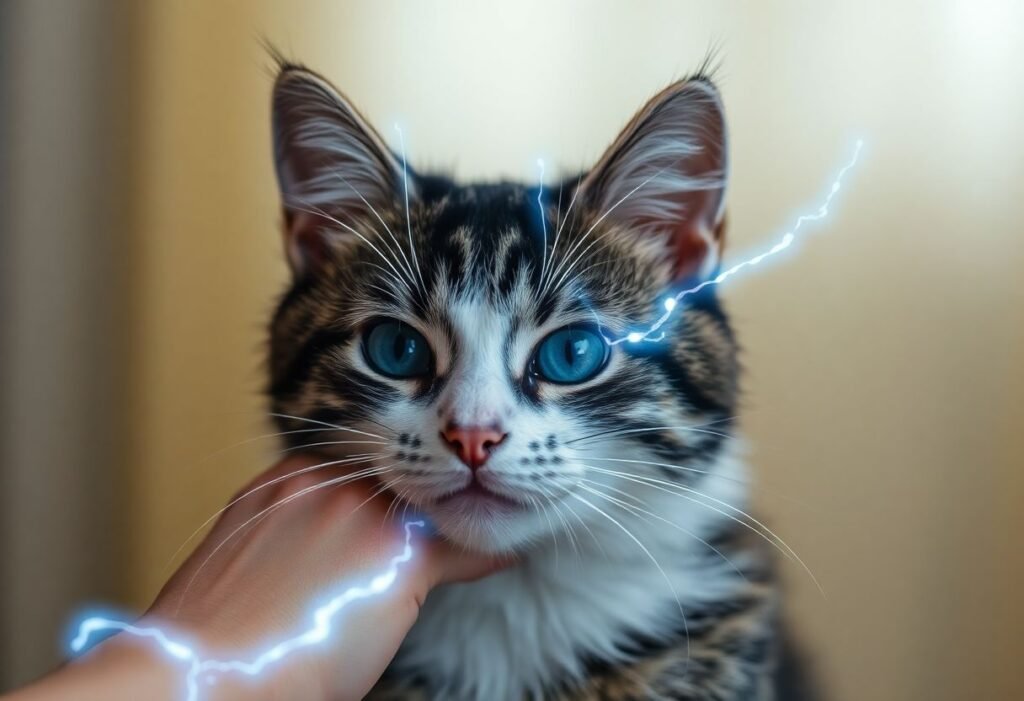The fascinating science of petting cats has recently been illuminated by new research, shedding light on how static electricity forms and its significance in our daily interactions with these beloved pets. Understanding this phenomenon enhances our appreciation for feline companions and their unique behaviors.
The Mechanisms of Static Electricity Explained
Recent advancements in scientific research have allowed us to understand the intricate mechanisms responsible for static electricity. Researchers have discovered that when surfaces come into contact and slide against one another, it can result in a transfer of electrons, leading to the accumulation of static charge. This process, first noted in ancient times, has puzzled scientists for centuries. In the case of pets, the material and texture of cat fur can efficiently conduct this charge, making them notable participants in the static electricity phenomenon.
The Role of Cat Fur in Conductivity
Not all materials contribute equally to static electricity; cat fur is remarkably effective due to its specific texture and composition. The unique structure of the hairs, along with their ability to attract and hold moisture, enhances their conductive properties. This is why, when you pet a cat, you may experience small shocks or see sparks, especially in dry environments. The fur’s surface characteristics facilitate charge transfer, which is essential for producing static electricity, further demonstrating the intriguing relationship between cats and electrical phenomena.
Scientific Discoveries Around Cat Fur
Over the years, numerous studies have explored the properties of cat fur and its interaction with static electricity. Scientists have confirmed that the variety of fur types, such as long-haired versus short-haired cats, can influence how much static charge is generated during petting. For instance, long-haired breeds may produce more noticeable static due to their fluffy and extensive fur, which has a higher surface area for electron transfer. These findings are crucial not only for understanding feline physiology but also for expanding our knowledge about static electricity in general.
Historical Context of Static Electricity
The concept of static electricity dates back to ancient Greece when Thales of Miletus first identified the phenomenon in 600 BCE. It wasn’t until the scientific revolution that more systematic studies were conducted. Understanding the historical context helps appreciate how far we have come in deciphering static electricity. Our modern-day understanding, which includes its effects on daily life and interactions, reflects centuries of exploration and experimentation that laid the foundation for current scientific inquiry.
Practical Implications of Static Electricity in Daily Life
Understanding static electricity not only has implications for science but also affects our everyday lives. For cat owners, the knowledge of why static shocks occur can lead to practical solutions. Utilizing humidifiers can help reduce static charge in the home, ensuring a more comfortable experience for both pets and their owners. Furthermore, educational insights into static electricity’s principles can enhance children’s understanding of basic physics concepts, stemming from their interactions with household pets.
Embracing Feline Companionship and Its Impact on Physics
The relationship between humans and cats extends beyond companionship; it also serves as a captivating case study in the field of physics. As we continue to learn more about the science underlying static electricity, we uncover novel ways these insights enrich our lives and interactions with animals. Cats not only provide joy and comfort but also spark curiosity about the natural world around us. Such connections remind us of the wonders that lie in our everyday experiences.
Disclaimer: This content is for informational purposes only and does not constitute professional advice.





















